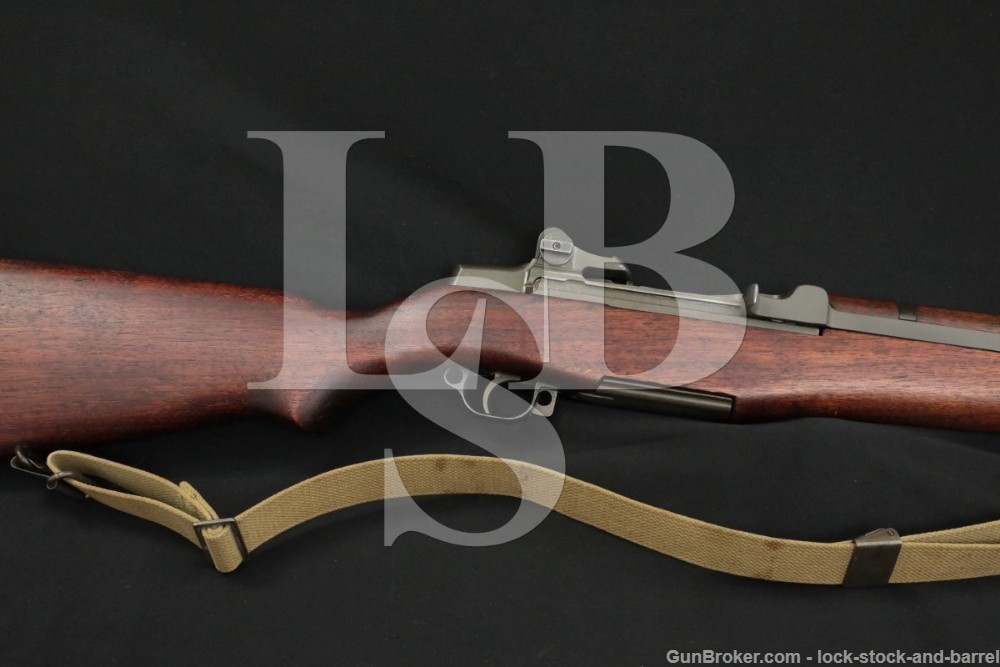

- #Springfield m1 garand serial numbers 7100000 cracked
- #Springfield m1 garand serial numbers 7100000 trial
On August 3, 1933, the T1E2 became the "semi-automatic rifle, caliber 30, M1". 276 caliber cease immediately and completely, and all resources be directed toward identification and correction of deficiencies in the Garand. Shuman, speaking for the Secretary of War, ordered work on the rifles and ammunition in. On February 25, 1932, Adjutant General John B. The day after the successful conclusion of this test, Army Chief of Staff General Douglas MacArthur personally disapproved any caliber change, in part because there were extensive existing stocks of. Meanwhile, Garand redesigned his bolt and his improved T1E2 rifle was retested. 276 caliber and production of approximately 125 T3E2s. A Janumeeting recommended adoption of the.
#Springfield m1 garand serial numbers 7100000 cracked
30 caliber Garand was also tested, in the form of a single T1E1, but was withdrawn with a cracked bolt on October 9, 1931. 276 Garand was the clear winner of these trials. 276 T3E2 Garands were made and competed with T1 Pedersen rifles in early 1931. 30 gas-operated Garand be resumed, and a T1E1 was ordered November 14, 1929. įurther tests by the SRB in July 1929, which included rifle designs by Browning, Colt–Browning, Garand, Holek, Pedersen, Rheinmetall, Thompson, and an incomplete one by White, led to a recommendation that work on the (dropped). 30 Garand, however, was dropped in favor of the. 256 Bang, and on September 21, the board reported no clear winner.


30 Thompson, both cavalry and infantry versions of the T1 Pedersen, "M1924" Garand, and. On August 13, 1928, a semiautomatic rifle board (SRB) carried out joint Army, Navy, and Marine Corps trials between the. 276 Pedersen T1 rifle, calling it "highly promising" (despite its use of waxed ammunition, shared by the Thompson). In early 1928, both the infantry and cavalry boards ran trials with the. 276 (7 mm) model (patented by Garand on April 12, 1930). In March 1927, the cavalry board reported trials among the Thompson, Garand, and 03 Springfield had not led to a clear winner. As a result, the Ordnance Board ordered a.
#Springfield m1 garand serial numbers 7100000 trial
This led to a further trial of an improved "M1924" Garand against the Thompson, ultimately producing an inconclusive report. At Fort Benning during 1925, they were tested against models by Berthier, Hatcher-Bang, Thompson, and Pedersen, the latter two being delayed blowback types. In 1924, twenty-four rifles, identified as "M1922s", were built at Springfield. 30 caliber primer actuated blowback Model 1919 prototype.

Army Museum of Hawaii Development įrench Canadian-born Garand went to work at the United States Army's Springfield Armory and began working on a. M1 Garand displayed with en bloc clip at U.S. 30, M1" or just "M1", and Garand was not mentioned. Frequently referred to as the "Garand" or "M1 Garand" by civilians, its official designation when it was the issue rifle in the U.S. Īlthough the name Garand is frequently pronounced / ɡ ə ˈ r æ n d/, the preferred pronunciation is / ˈ ɡ ær ən d/ (to rhyme with errand), according to experts and people who knew John Garand, the weapon's designer. The M1 replaced the bolt-action M1903 Springfield as the U.S.' service rifle in 1936, and was itself replaced by the selective-fire M14 rifle on March 26, 1958. Patton called it "the greatest battle implement ever devised". By most accounts, the M1 rifle performed well. It was the first standard-issue autoloading rifle for the United States. 30-06 Springfield cartridge and is named after its Canadian-American designer, John Garand. The M1 Garand or M1 Rifle is a semi-automatic rifle that was the United States' service rifle during World War II and the Korean War.


 0 kommentar(er)
0 kommentar(er)
